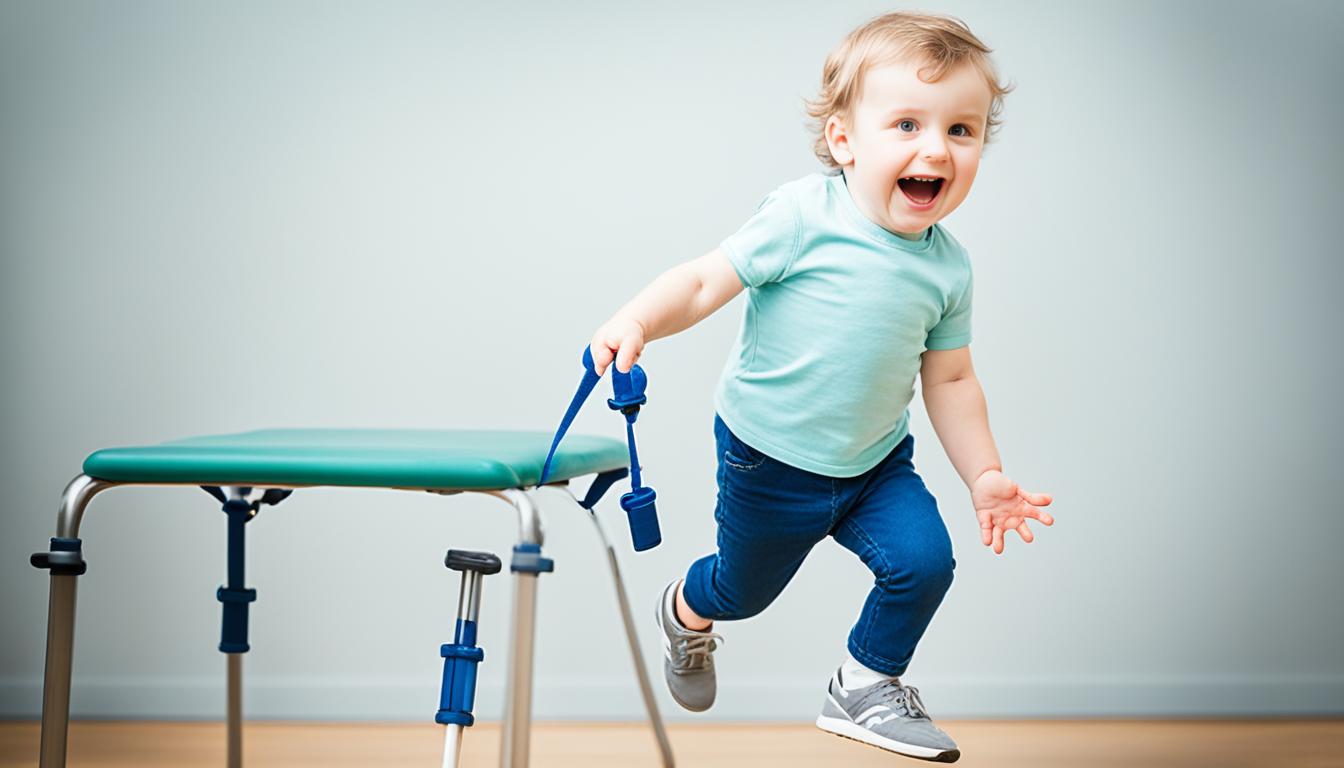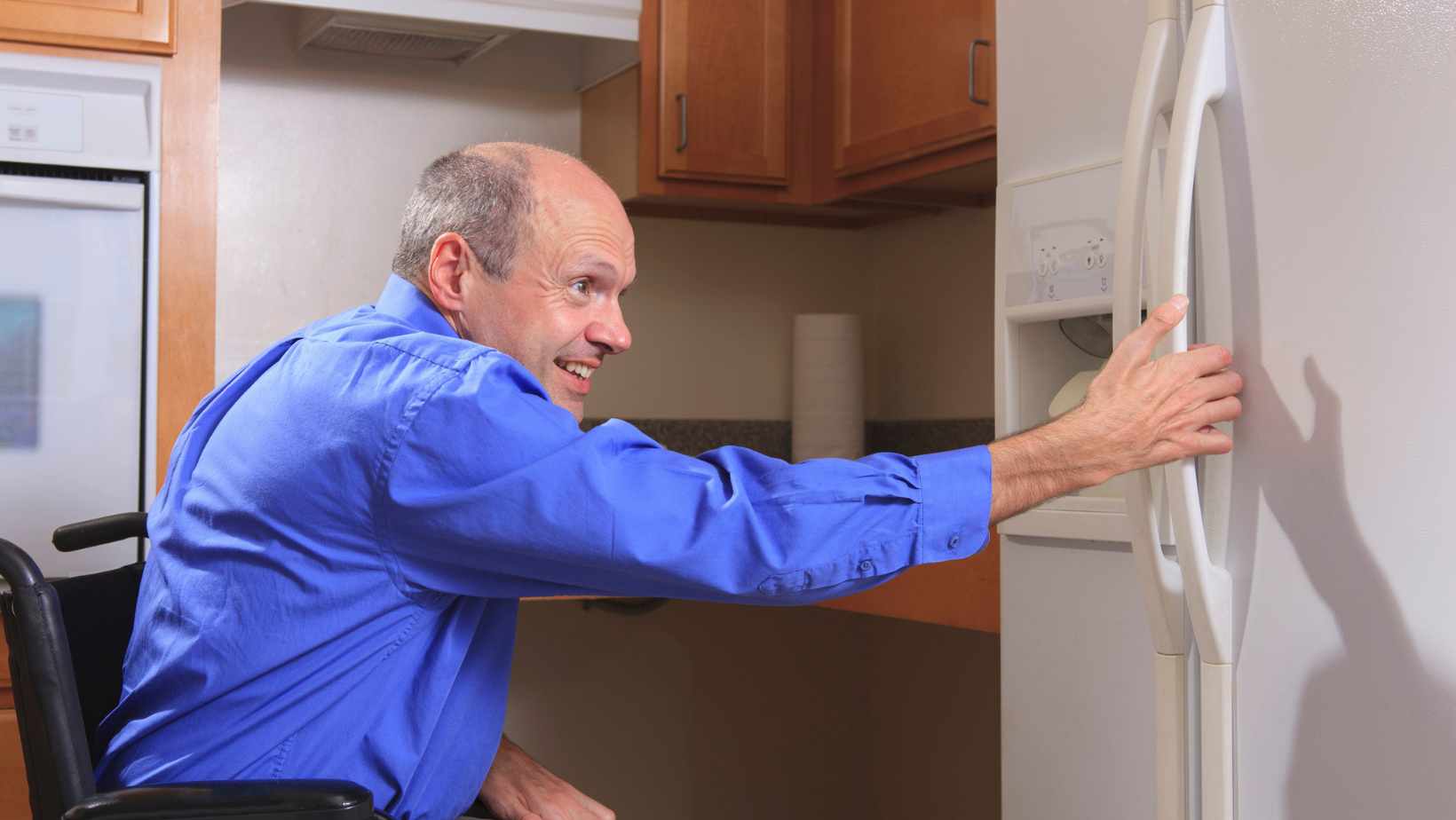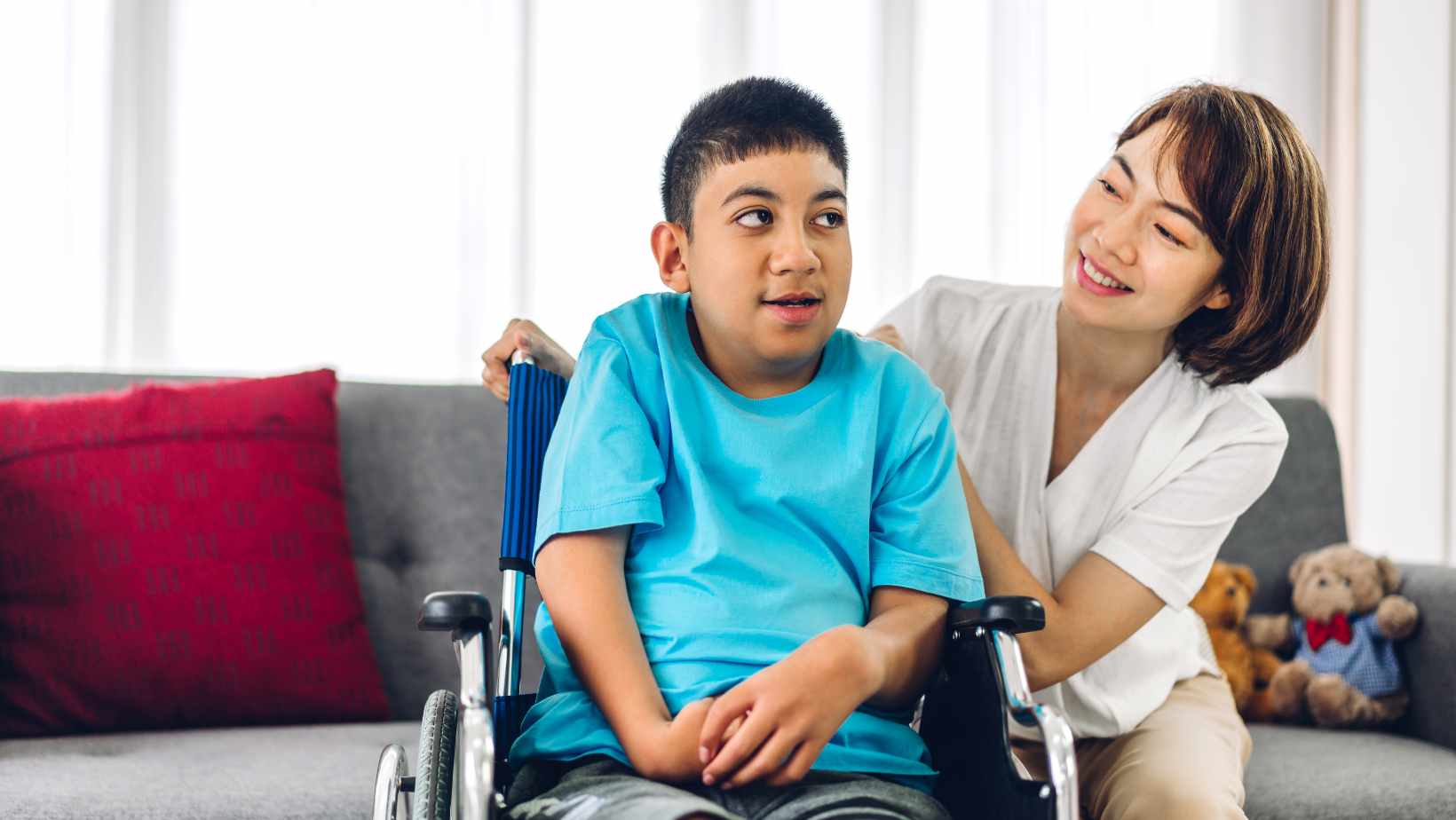Acute cerebellar ataxia doesn’t give you a warning. One day you may walk normally. The next day, you can’t keep your balance, your speech becomes slurred, and your hands start shaking. It feels sudden, scary, confusing. You might wonder, “did I just get dizzy, or is something more serious going on?”.
Sudden loss of coordination can be a red flag for acute cerebellar ataxia, a rare but real neurological condition that mostly affects children, but can also strike adults. While it’s often temporary, not knowing what’s happening or how to respond adds panic to the situation.
This blog will help you clearly understand what acute cerebellar ataxia is, why it happens, how to spot it, and what to do next.
Whether you’re a parent, caregiver, or just someone curious about your health, this guide will give you the answers you’re looking for.
Table of Contents
ToggleWhat is Acute Cerebellar Ataxia (ACA)?
Acute cerebellar ataxia is a condition where the cerebellum (the part of your brain that controls movement and balance) suddenly stops working properly. This problem makes it hard to walk, speak, or move in a steady way. “Acute” means it comes on suddenly, often over hours or days.
Even though acute cerebellar ataxia can look scary, it’s usually not permanent. Most people get better over time. It’s most common in children, especially after a viral infection. But adults can get it too.
The acute cerebellar ataxia definition is simple: a sudden loss of coordination due to issues in the cerebellum, often caused by infections, inflammation, or other triggers. It’s not a disease on its own, it’s a symptom of something affecting the cerebellum.
What causes acute cerebellar ataxia?
There are many acute cerebellar ataxia causes, but here are some of the most common:
- Viral infections (like chickenpox, Epstein-Barr virus)
- Bacterial infections (such as Lyme disease)
- Reactions to medicines or vaccines
- Head injuries
- Autoimmune problems
- Stroke or bleeding in the brain
These triggers can make the cerebellum inflamed or damaged. When that happens, your body loses control over movement and balance.
What are the symptoms of acute cerebellar ataxia?
Acute cerebellar ataxia symptoms usually come on fast and can include:
- Unsteady walking
- Trouble using arms or hands
- Slurred speech
- Dizziness
- Trouble with eye movement
- Shaky body movements
These signs might look like the person is just clumsy or tired. But if they appear suddenly, they should never be ignored.
How is acute cerebellar ataxia diagnosed?

Diagnosing acute cerebellar ataxia begins with a detailed clinical check. The doctor observes how the patient walks, moves their arms, speaks, and tracks objects with their eyes. Sudden loss of balance, shaky hands, or slurred speech are red flags.
- An MRI or CT scan is often the first test. These images show if the cerebellum is swollen, bleeding, or injured. Brain scans also help rule out stroke, tumors, or infections.
- Blood tests are done to check for viral or bacterial infections, immune system problems, and vitamin deficiencies.
- A spinal tap (lumbar puncture) may be needed if doctors suspect swelling or infection around the brain.
- Toxicology tests may be done if poisoning or drug side effects are suspected. Doctors will also check if the patient recently had chickenpox or another virus, especially in acute cerebellar ataxia in children.
Diagnosing acute cerebellar ataxia early helps begin the right treatment and improves acute cerebellar ataxia recovery chances. If symptoms worsen, doctors may repeat tests to monitor brain changes.
How is acute cerebellar ataxia treated?
Acute cerebellar ataxia treatment depends on the cause, the severity of symptoms, and the patient’s age. In most children, especially after viral infections, rest, hydration, and monitoring are enough. Their brain often recovers without major medical help.
For more serious cases, especially in adults, treatment focuses on stopping the cause, reducing swelling, and restoring brain function.
Doctors may use:
- Steroids to reduce inflammation in the cerebellum
- IVIG therapy when the immune system is attacking the brain
- Antibiotics for bacterial infections
- Antivirals for viral causes like chickenpox
- Vitamin supplements if blood tests show deficiencies
Once the immediate problem is controlled, rehab begins. This step is key to a full acute cerebellar ataxia recovery. Therapy focuses on improving balance, speech, and movement skills.
- Physical therapy helps regain walking and coordination
- Speech therapy is used if speech or swallowing is affected
- Occupational therapy helps patients relearn daily tasks
Recovery time varies. Children usually recover faster. Adults may need longer support, especially when the cause is severe. Early treatment gives the best chance for full recovery and reduces the risk of permanent problems linked to acute cerebellar ataxia.
That’s what makes acute cerebellar ataxia recovery possible.
How does acute cerebellar ataxia affect adults?
Acute cerebellar ataxia in adults usually shows up without warning. Common signs include loss of balance, poor coordination, shaky hands, slurred speech, dizziness, and trouble walking or standing. Some adults also feel confused or weak, which may lead to falls or difficulty with everyday tasks.
Unlike children, adults often have more serious underlying causes such as stroke, tumors, head trauma, or autoimmune diseases. These causes may lead to slower or incomplete recovery.
In many cases, treatment takes longer and may involve ongoing therapy to rebuild strength, coordination, and balance. Some people may continue to have mild issues with walking, writing, or focusing, depending on how much the cerebellum was affected.
There’s also an emotional side to this condition. Losing control of the body, even for a short time, can cause fear, anxiety, or low self-esteem. This emotional toll can impact work life, social confidence, and relationships.
That’s why early diagnosis and targeted care are essential, not just for physical healing but also to avoid acute cerebellar ataxia long term effects like chronic unsteadiness or communication difficulties.
What other conditions are similar to acute cerebellar ataxia?
Several conditions act like acute cerebellar ataxia, but they develop differently:
Subacute ataxias
These start slower than acute ones, developing over days to weeks. Causes include autoimmune diseases, vitamin deficiencies, or cancers. They still affect the cerebellum, but they creep in more slowly.
Chronic progressive ataxias
These get worse over time, often from genetic or inherited problems. Friedreich’s ataxia or spinocerebellar ataxia fall into this group. Symptoms may start mild but slowly get worse.
Congenital ataxias
These are present from birth. Children born with cerebellar defects may show poor coordination, speech delays, and muscle weakness. These aren’t sudden like ACA, but the symptoms can look similar.
What complications are associated with acute cerebellar ataxia?
Most people recover fully, but sometimes acute cerebellar ataxia long term effects can include:
- Long-term balance problems
- Trouble speaking or writing
- Emotional issues due to sudden disability
- Muscle weakness or lack of coordination
Rarely, permanent brain damage can occur, especially if treatment is delayed. That’s why early care is so important.
Is it possible to prevent acute cerebellar ataxia?
There’s no sure way to prevent acute cerebellar ataxia, but these steps help:
- Vaccinate your child to avoid infections like chickenpox
- Treat infections early
- Avoid harmful substances
- Monitor medicine use
While you can’t stop every case, being careful with health and hygiene lowers the risk.
Wrapping up
Acute cerebellar ataxia may come without warning, but your response doesn’t have to. With the right knowledge and fast action, most people, especially children recover well. Understanding the signs, getting proper diagnosis, and following the best acute cerebellar ataxia treatment plan can make recovery smoother and quicker.
While it’s scary to see a sudden loss of control in yourself or someone you love, this condition is often reversible. The sooner you act, the better the chances for full acute cerebellar ataxia recovery.
Now that you know what to watch for and how to respond, you’re one step ahead
Acute Cerebellar Ataxia (ACA) FAQs
Acute cerebellar ataxia is a sudden brain condition where balance and coordination break down due to cerebellum issues. It’s often caused by infection, trauma, or autoimmune reaction. Recovery is possible with proper treatment.
Symptoms usually last a few days to a few months. Most children recover fully. In adults, the healing process can take longer depending on the cause and the body’s response to care.
Acute cerebellar ataxia is rare. It mostly affects children under 10. Incidence increases after viral infections like chickenpox. Adult cases are less common but can happen due to stroke, injury, or immune problems.
Doctors diagnose it using clinical exams, brain imaging (MRI/CT), and blood or spinal fluid tests. The goal is to rule out stroke, infections, or toxins. Fast diagnosis improves the chances of full recovery.
Children aged 2–7 are most affected, especially after viral infections. Adults can also get it, but causes are often more serious, like brain injury, stroke, or immune system issues.
The most common signs include unsteady walking, slurred speech, dizziness, shaky hands, and poor balance. These acute cerebellar ataxia symptoms appear quickly and should never be ignored.
Most people recover, especially children. In severe or untreated cases, some symptoms may stay. Early treatment lowers the chance of lasting problems like speech issues or walking trouble.
It can return if the root cause isn’t solved, like an ongoing immune disorder or repeated infections. But in most viral-related cases, it doesn’t come back once the brain heals.
Acute cerebellar ataxia treatment depends on the cause. Options include rest, steroids, immune therapy, antivirals, or rehab. Kids often recover on their own. Adults may need longer care and therapy.
No, acute cerebellar ataxia is not contagious. However, some infections that may trigger it, like chickenpox can be. Keeping up with vaccines helps reduce risk in children.
About The Author

Dr Chandril Chugh
Dr Chandril Chugh is committed & compassionate Board-Certified Neurologist, ,providing expert insights and reliable health information. with a Holistic Approach to Healing
About Author | Instagram | YouTube | Linkedin
Related Blog Posts
What Is Cerebellar Ataxia? Understanding the Basics
July 23, 2025
Understanding Ataxic Cerebral Palsy – Key Facts
April 16, 2024
Ataxia Symptoms in Adults: Spot the Signs
April 13, 2024
Cerebellar Ataxia Treatment Options Explored
April 13, 2024




